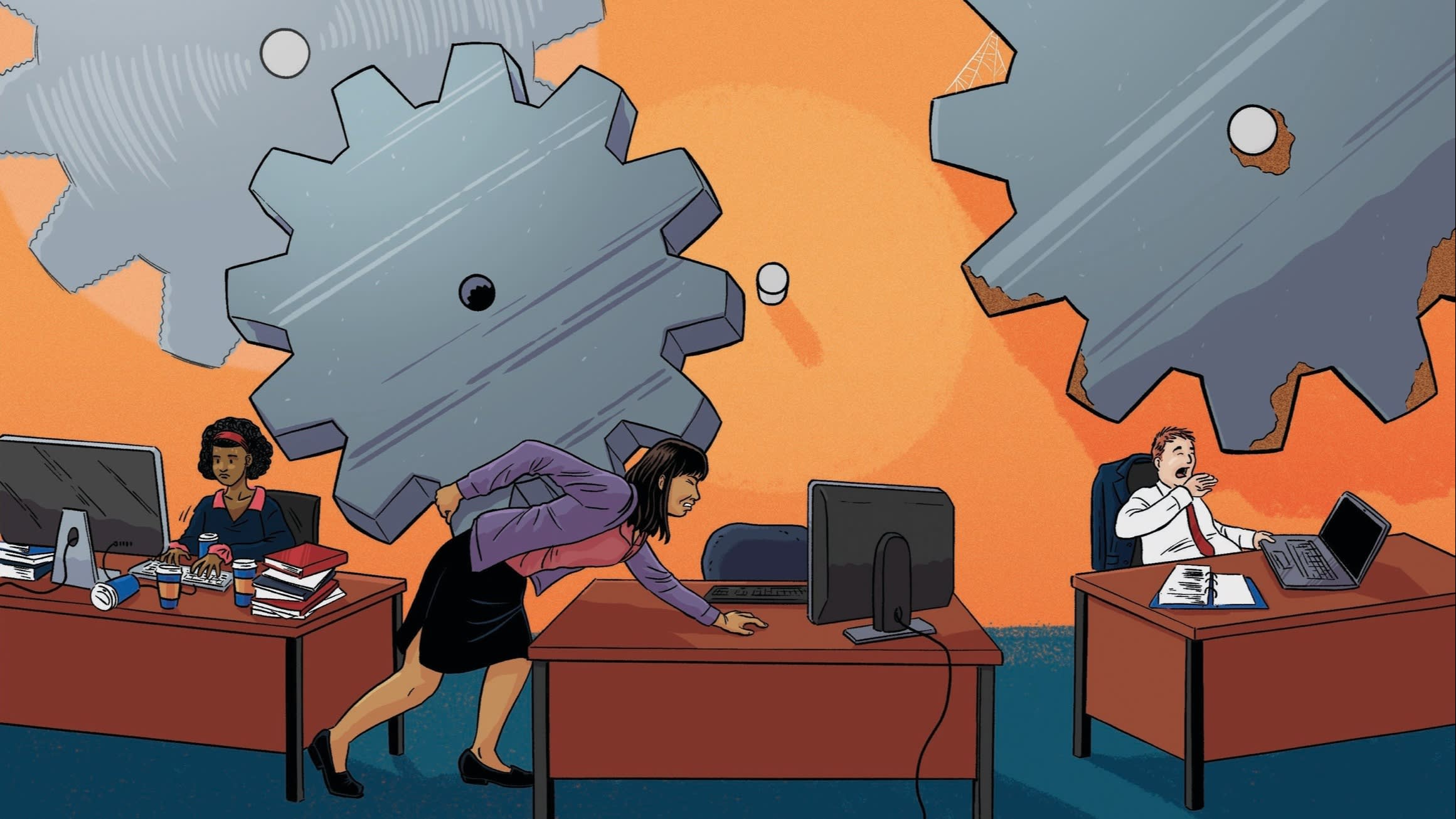Workplace wellbeing: how to make it better — and what makes it worse
Ian Edwards has long sought to improve the wellbeing of employees at Nomura, but in the past few years he has observed new pressures on their physical and mental health, productivity and retention in the workforce.
As health and safety manager for the UK operations of the Japanese bank, he has seen a notable jump in stress linked to caring for family members during and since the outbreak of Covid-19, as well as growing financial worries and fear about climate change.
“We saw social anxiety increase,” he says. “There are also a whole series of financial and environmental concerns affecting our employees. They are worrying about where their fish [in their diet] are coming from, whether the house will flood.”

It shows a surge in mental ill health and anxiety compared with previous years, and a rise in sickness absences and “presenteeism” or unproductive working. It also highlights the effects of recent trends, including the sharp increase in remote working sparked by lockdowns and infection-control measures in response to Covid-19.
The survey suggests that employees who are able to adopt hybrid working patterns — balancing their time between office and home — have the highest levels of job satisfaction and the lowest levels of presenteeism and absenteeism. The least productive were those required to be away from home in workplaces other than an office — such as a factory or retail outlet.
Since the start of Covid-19 especially, employers have shown increased interest in staff wellbeing as they seek to support continued growth in their organisations. They have explored new approaches and tools, from mindfulness apps to restructuring roles and responsibilities. That has sparked a thriving wellness industry offering programmes that claim to improve health.
But experts who study the topic warn that there is a lack of rigorous research on cause and effect, and which interventions really work. Jan-Emmanuel De Neve, an economist at the Saïd Business School at Oxford university, says: “There is little ‘gold standard’ evidence with randomised control trials. There are lots of small pilots which are often not well evaluated or reported on.
“There is one piece of really good evidence: you can’t yoga your way out of these more structural issues underpinning mental and physical health. That’s not to say mindfulness is a bad thing, but it’s not addressing the main structural causes.”
He points to a rigorous analysis published in 2019 called the Illinois Workplace Wellness Study, which explored the effects over two years of a comprehensive workplace wellness programme called iThrive in Urbana-Champaign in the US.

Bob Chapman, Barry-Wehmiller’s chair and chief executive, has argued for the importance of empathetic management in contrast to what he described earlier this year as a more typical trend: “Traditional leadership or management conditions us to view people as functions, to get them to do what we want so we can be successful, not because we care about them.”
For Sir Cary Cooper, professor of organisational psychology at Alliance Manchester Business School and co-founder of the National Forum for Health and Wellbeing at Work, the most effective measures to improve employee wellbeing would be to give equal weight to “people skills” and emotional intelligence alongside technical skills when recruiting or promoting line managers.
He also says employers should appoint a non-executive director and a senior executive responsible for health and wellbeing; and to introduce regular surveys and reporting to measure the effects on the workforce.
Even for companies such as Nomura that have the resources and commitment to wellbeing, identifying the right policies and overcoming external pressures beyond their control remain significant constraints.
Nomura’s Edwards points out that even while remote and hybrid working has simplified efforts to train its line managers, it has reduced the benefits of human contact in the office. “It is giving people more flexibility but they are not getting the health benefit from it yet.”
And however much the bank does to support staff, it has limited ability to influence external factors that weigh on staff wellbeing. “You think employees are healthier and then you get Brexit or the war in Ukraine and it totally changes the playing field.”
This story originally appeared on: Financial Times - Author:Andrew Jack




























